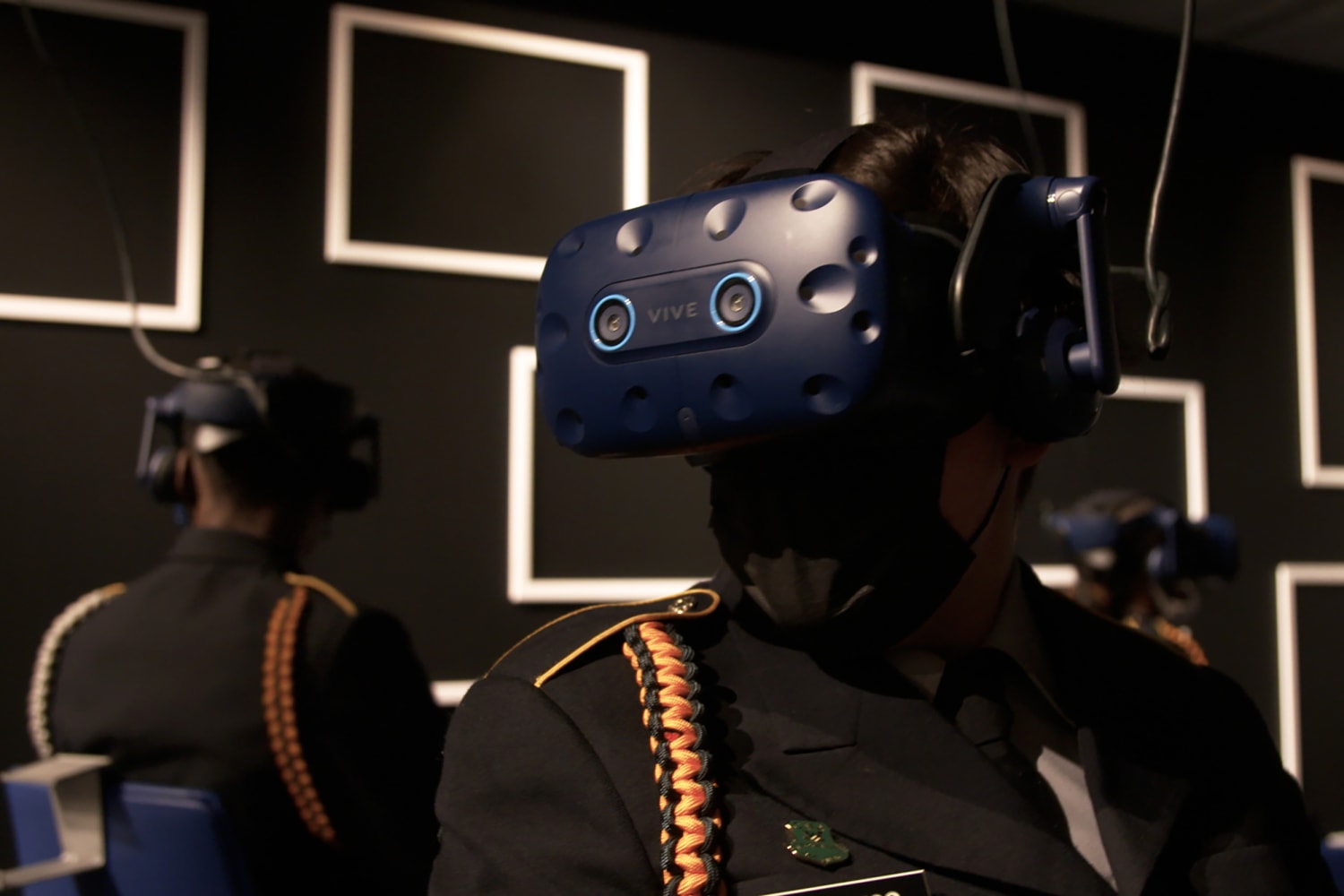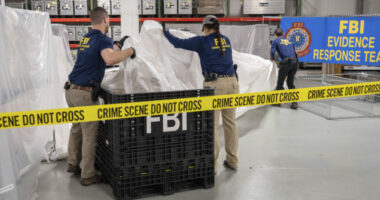SKOKIE, Ill. — As time passes and it becomes increasingly difficult to document the firsthand accounts of Holocaust survivors as their numbers wane, the Illinois Holocaust Museum and Education Center is using cutting-edge technology to preserve the testimonies of some of the remaining survivors.
The museum says 250,000 to 400,000 survivors are still alive worldwide, and it trains an eye on them in a first-of-its-kind double exhibition. One of the exhibitions, “The Journey Back: A VR Experience,” expands the field of Holocaust memory through transportive storytelling, while “The Abe & Ida Cooper Survivor Stories Experience” allows visitors to ask questions of survivors’ holograms and get real-time responses based on about 40 hours of recorded interviews.
The Cooper exhibit features Dimensions in Testimony, developed by USC Shoah Foundation in association with the Illinois museum.
In the virtual reality experience, visitors wearing headsets are led by Holocaust survivors Fritzie Fritzshall or George Brent through the historical and current-day Auschwitz, Mauthausen and Ebensee concentration camps.
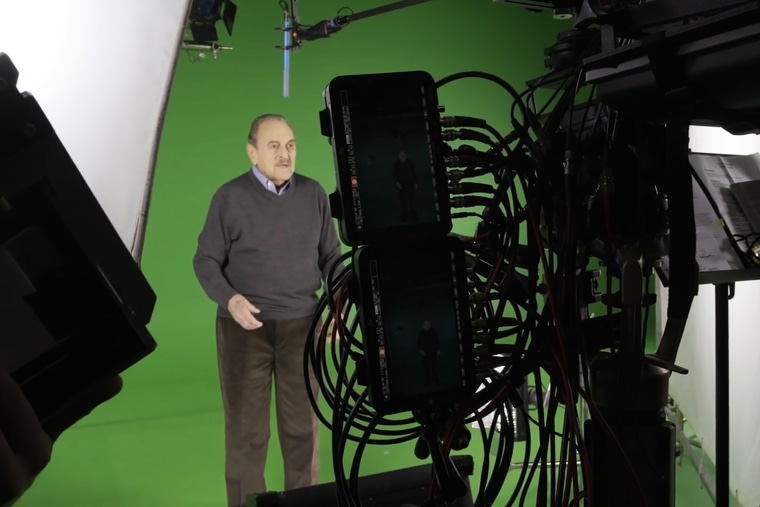
Fritzshall, who died last year, traveled back to Auschwitz in 2018 to make the virtual reality film. Because Brent was too fragile to travel to Europe, the filmmakers used green-screen technology to place him in the locations he describes, such as concentration camp barracks.
As the survivors share their harrowing experiences, visitors sit in a blue swivel chair that helps them control their 360-degree experiences.
The 12-minute film featuring Brent, 93, begins with him sharing how he found a picture of his father and another one of himself in “The Auschwitz Album,” a book he discovered in a bookstore in 1981.
“I ran with them to show people that here is the proof that I really was in Auschwitz,” he recalls in the film.
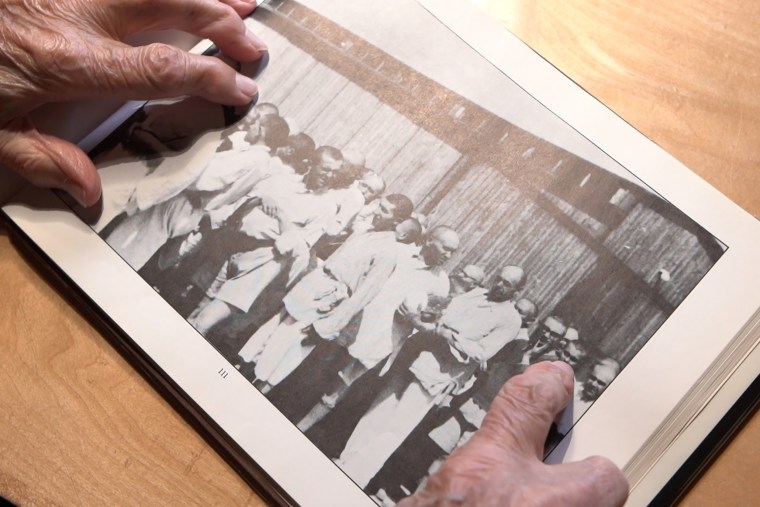
Ebensee, a concentration camp in Austria where Brent was sent at age 15, is now a suburban town, but the VR film ensures that the historical grounds are preserved, he said.
“What struck me is the change these places go through over the years, and what I am afraid of is eventually they will disappear,” he said in an interview.
Susan Abrams, the CEO of the Illinois Holocaust Museum and Education Center, said it gives her chills to think that such technology is available while survivors are still alive to share their stories.
Being immersed in a virtual reality headset “moves people in a different way,” she said.
“Instead of passively reading something or watching something, you are engaged in it,” she added. “If the technology is working well, which it does, it fades into the background.”
But it’s not all about the tech; it’s also about the powerful historical story, she said.
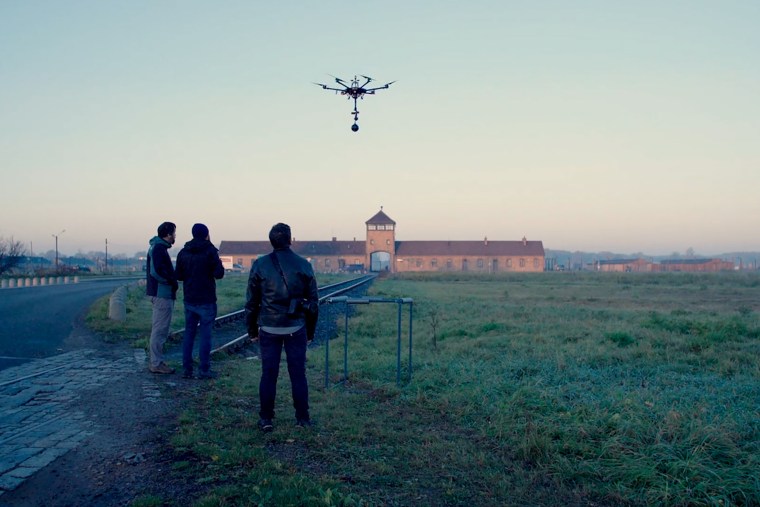
“When George’s family experienced it for the first time, I was so struck and so proud when one of them said: ‘Wow, I’ve heard the story so many times. But until I had that headset on and I was standing there with him, I don’t think I ever experienced it quite like this.’”
Brent and his family were put on a train to Auschwitz-Birkenau in Poland in May 1944 from their home in the former Téscö, Hungary, which is part of present-day Ukraine. When they arrived, Brent and his father were ordered to work, and his mother and younger brother were killed in the gas chambers.
In the film, he describes his journey to Auschwitz-Birkenau as the worst three days of his life. He said the virtual reality experience, which tries to capture the train ride by making viewers feel as though they are in the boxcar surrounded by people crying, coughing and screaming, “is so realistic.”
Divine Olikaju, 15, a student at the Chicago Military Academy, tried the virtual reality experience on a field trip to the museum. He and his classmates also met Brent, who happened to be there.
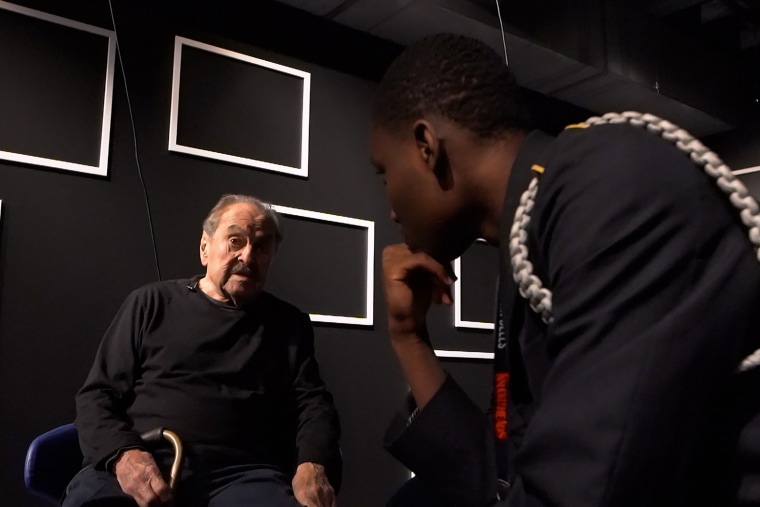
“Just being in the boxcar at the VR place, I felt kind of scared myself, being cramped among all the people,” he said. “Just being in there, it was very immersive. I think it will be a useful tool to teach other kids what happened.”
Abrams said firsthand testimonies are the “most powerful way to develop empathy and an understanding of our common humanity,” adding that the museum is making three more virtual reality films.
“At this moment in time, when we’re seeing a rise in [not only] antisemitism but in all forms of hatred and bigotry, we’re so, so grateful to be able to have these stories to share,” she said. “Technology will make it scalable, too, so that ultimately millions can have these experiences.”
Source: | This article originally belongs to Nbcnews.com


